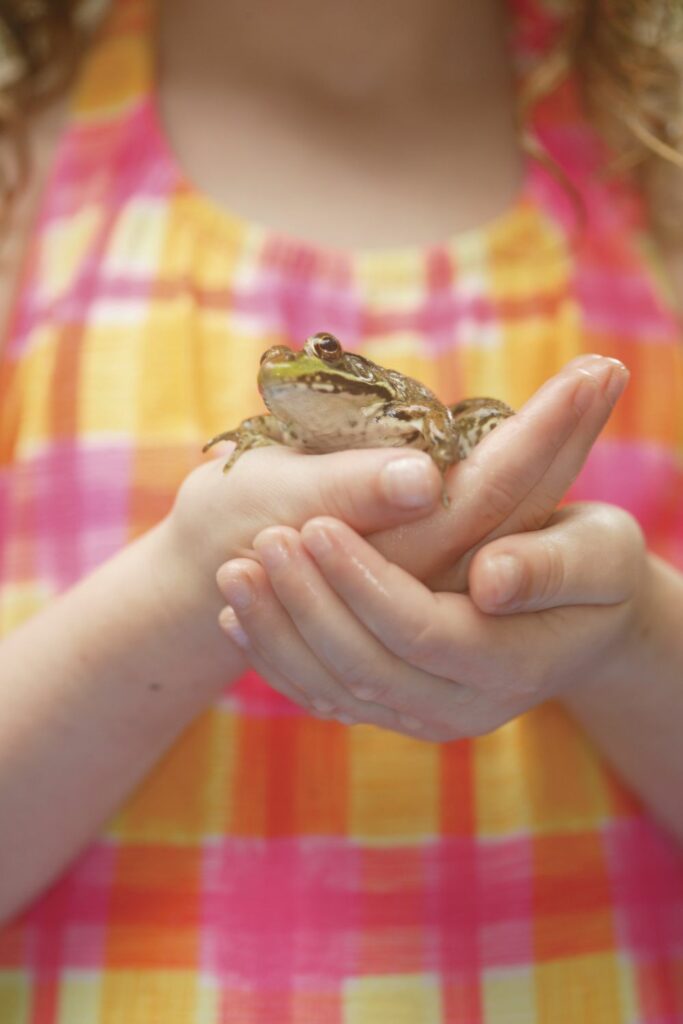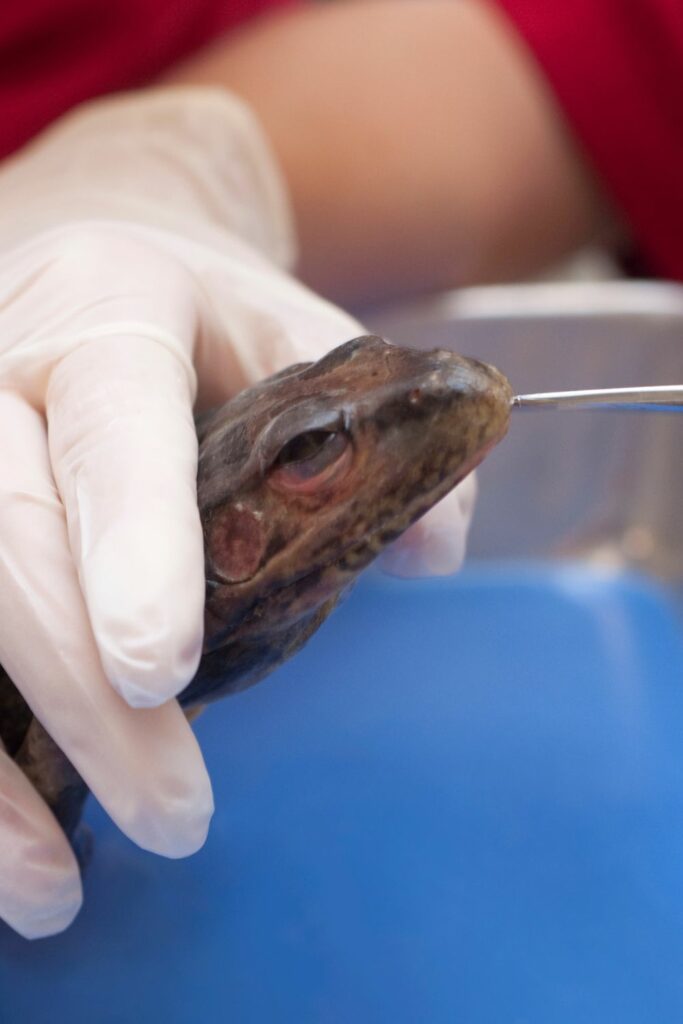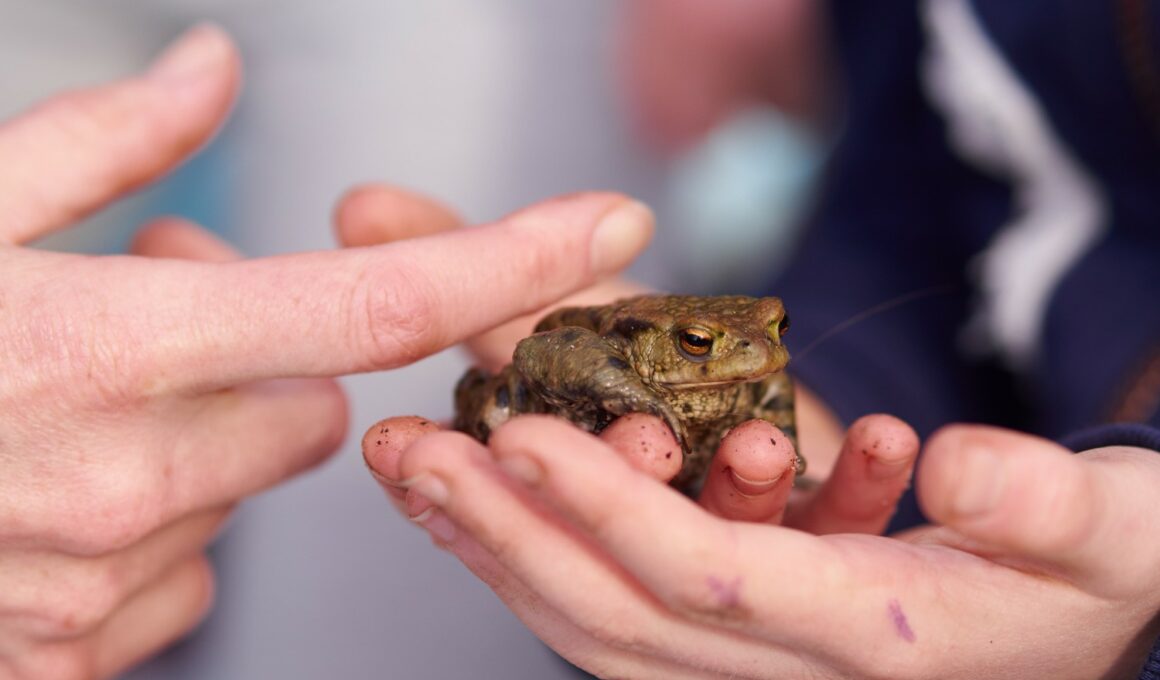In this article Show
Ever found yourself captivated by the fascinating world of frogs, maybe even contemplating whether you could pick one up for a closer look? Well, you’re not alone. Frogs are intriguing creatures, but there’s a big question that often leaps to mind: Can you touch frogs with bare hands?
As someone who’s spent years caring for a variety of pets, including some scaly friends, I’ve done my fair share of research on amphibians like frogs. And let me tell you, the answer to this question isn’t as straightforward as you might think.
In this post, we’ll delve into the unique anatomy of frog skin, explore the risks involved in touching them, and discuss safe ways to handle these amphibians. So, if you’re curious about frogs or considering one as a pet, stick around. This is information you won’t want to miss.
Can You Touch Frogs With Bare Hands?
Yes, you can touch frogs with bare hands, but it is not recommended. Frogs have sensitive skin that can easily absorb substances, including oils and salts from human skin, which can be harmful to them. Additionally, some frogs secrete toxins that could be irritating or harmful to humans. If handling is necessary, it’s best to wear gloves or wash your hands thoroughly both before and after touching the frog to protect both you and the frog.
The Risks of Touching Frog With Bare Hands

When it comes to interacting with frogs, it’s essential to be aware of the potential risks involved—for both you and the frog. Let’s break it down.
1. Chemicals on Frog Skin
Some frog species secrete toxins that serve as a defense mechanism against predators. While these toxins are generally not lethal to humans, they can cause skin irritation, allergic reactions, or even more severe health issues if ingested.
2. Risks to Humans
- Skin Irritation: The chemicals on a frog’s skin can cause mild to severe skin irritation.
- Allergic Reactions: Some people may experience allergic reactions, including itching or hives.
3. Risks to Frogs
- Skin Damage: Our skin naturally has oils and salts that can be harmful to a frog’s permeable skin.
- Stress: Handling can be stressful for frogs, potentially leading to weakened immune systems and increased disease susceptibility.
The bottom line is that touching a frog with bare hands isn’t just risky for you; it can also be harmful to the frog. But don’t worry, if you absolutely must handle a frog, there are safer ways to do it, which we’ll cover in the next section.
Safe Ways to Handle Frogs
So, you’ve learned about the risks, but what if you find yourself in a situation where you need to handle a frog? Whether it’s for educational purposes, scientific research, or a rescue mission, there are ways to do it safely.
1. Use Gloves

The first rule of thumb—is always to use gloves. Nitrile or latex gloves are generally recommended as they offer a barrier between your skin and the frog’s, protecting both parties involved.
2. Proper Handling Technique
If you must pick up a frog, do so gently and without squeezing. Use a soft grip and hold the frog loosely to minimize stress.
3. Observation Over Interaction
Sometimes, the best way to enjoy these creatures is to observe them without touching them. Use binoculars or take photos from a distance to appreciate their beauty without causing them harm.
By following these guidelines, you can ensure a safer experience for both you and the frog. But remember, handling should be the exception, not the rule.
When Is It Necessary to Touch a Frog?
While it’s generally best to avoid handling frogs, there are certain situations where it may be necessary. Let’s explore some of these scenarios.
1. Scientific Research
Researchers often need to handle frogs for tagging, measuring, or collecting samples. In such cases, strict protocols are usually followed to minimize harm to the animals.
2. Rescue Situations
If a frog is in immediate danger—say, stuck in a drain or caught in netting—then intervention may be necessary. Even then, it’s crucial to use gloves and handle the frog as gently as possible.
3. Pet Care
If you have a pet frog, there will be times when you need to move it, perhaps for tank cleaning or a vet visit. Again, gloves and gentle handling are key.
In all these situations, the aim should be to minimize the duration and stress of the handling. Always remember that your actions can have a significant impact on the frog’s well-being.
This is a widely believed myth, but it’s completely untrue. Warts are caused by human papillomaviruses, not by frogs. Frogs themselves can’t give you warts.
Final Thoughts
So, can you touch frogs with bare hands? The short answer is, it’s better not to—for both your sake and the frogs. Frogs have unique, permeable skin that serves various functions but also makes them vulnerable to toxins and stress. Handling them can pose risks to humans, such as skin irritation and allergic reactions, and can also be harmful to the frogs themselves.
The key takeaway here is to exercise caution and responsibility. If you absolutely must handle a frog, make sure to use gloves and follow proper handling techniques. Better yet, opt for observation over interaction whenever possible. By being informed and respectful, we can enjoy these fascinating creatures without causing them harm.









